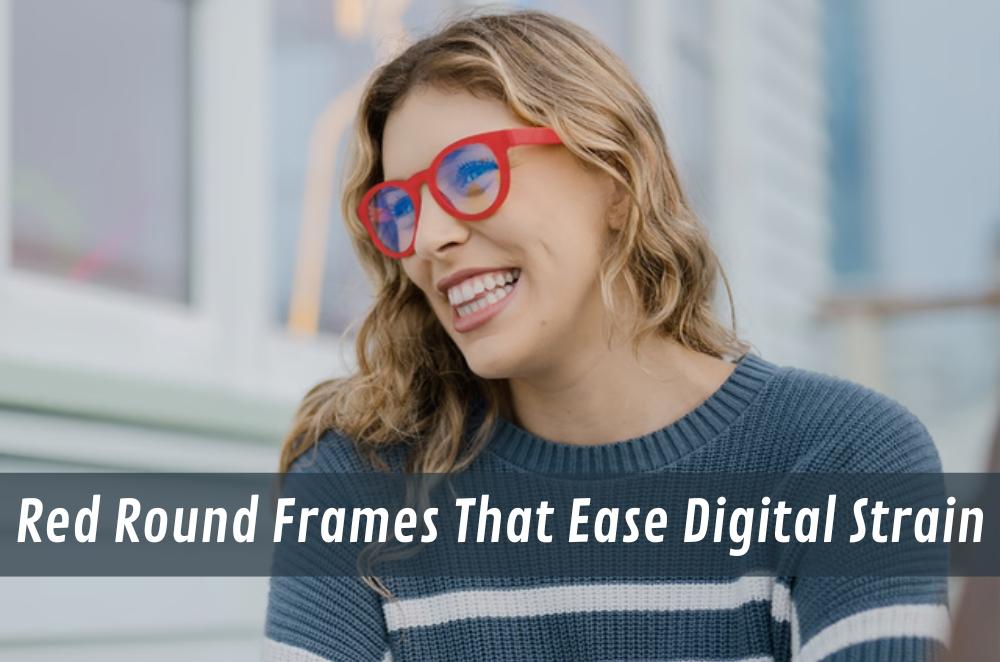Red Round Frames That Ease Digital Strain

Long stretches on a laptop or phone can leave eyes feeling sandy, focus slipping, and a headache brewing. Many of us want eyewear that doesn’t just look tidy but actually helps, and red round frame prescription glasses for digital eye strain fit that bill without shouting for attention. The round silhouette spreads weight evenly; the prescription can be tuned to true computer distance; the muted red reads calm, not flashy. Add anti-reflective coatings and a sensible desk setup, and the day eases up—less squinting at tiny text, fewer tension spikes behind the eyes, and a quieter finish when you finally close the lid.
How do round prescription frames help with digital eye strain?
Round frames help by balancing pressure across the face and keeping alignment steady. With lenses tuned for near and mid-range tasks, they curb visual fatigue when sessions run long.
-
Even weight reduces hotspot pressure
-
Consistent fit supports lens alignment
-
Suits near/intermediate prescriptions are common at desks
Stability matters as hours stack up. A firm bridge and light temples limit slipping—and those little readjustments that knock focus around. Layer in the 20-20-20 habit (every 20 minutes, look 20 feet away for 20 seconds) to ease accommodative stress and the blink slump that dries eyes out.
Why choose red frames for prescription glasses if you’re on screens?
Red frames add gentle contrast without taking over your face. They’re adaptable—fine for the office, easy after hours.
Colour also shapes how put-together you feel on calls. A softened red reads intentional rather than flashy, while the round shape eases sharper angles for an approachable look. It pairs neatly with smart-casual wardrobes, so shifting from meetings to errands doesn’t mean swapping frames.
Style–function balance:
-
Works across many skin tones
-
Complements round optics for mid-range focus
-
Keeps attention near the eyes on the video
What lens options best support heavy screen time?
Anti-reflective coatings and accurate intermediate prescriptions usually deliver the biggest comfort gains. Blue-light filtering can help some people, but it’s not a cure-all.
Rather than chasing maximum blocking, prioritise glare control and crisp contrast. Subtle tints can feel nicer at night; during the day, clear, well-calibrated optics are typically the least distracting.
Practical setup:
-
Calibrate brightness to avoid glare spikes
-
Keep screens about an arm’s length away
-
Use task lighting to smooth harsh contrast gaps
For multifocal wearers: Office/intermediate designs widen the sweet spot at screen distance, easing posture strain and head tilt.
How do you pick the right fit for all-day comfort?
Start with bridge shape, temple length, and overall weight. If the frame sits evenly and doesn’t pinch, you’re halfway there.
Misfit frames slip, need nudging, and can misalign optics—classic headache territory. A well-fitted pair stays put, keeping lenses aligned with your natural line of sight.
Fit checklist:
-
No gaps or pinch at the bridge
-
Temples rest lightly without pressure
-
Frame width matches cheekbones; no lash rub
-
Pupillary distance measured and verified
Conclusion
Round frames deliver steady comfort for screen-centric routines, and a restrained red brings quiet character without shouting. Prioritise fit, intermediate-distance optics, and glare control; treat blue-light filters as optional. For added context on how everyday choices align with screen habits, this overview of everyday eyewear trends for screens is a straightforward read.
- Vibnix Blog
- Politics
- News
- Liberia News
- Entertainment
- Technology
- Educação
- Art
- Causes
- Crafts
- Dance
- Drinks
- Film
- Fitness
- Food
- Jogos
- Gardening
- Health
- Início
- Literature
- Music
- Networking
- Outro
- Party
- Religion
- Shopping
- Sports
- Theater
- Wellness



